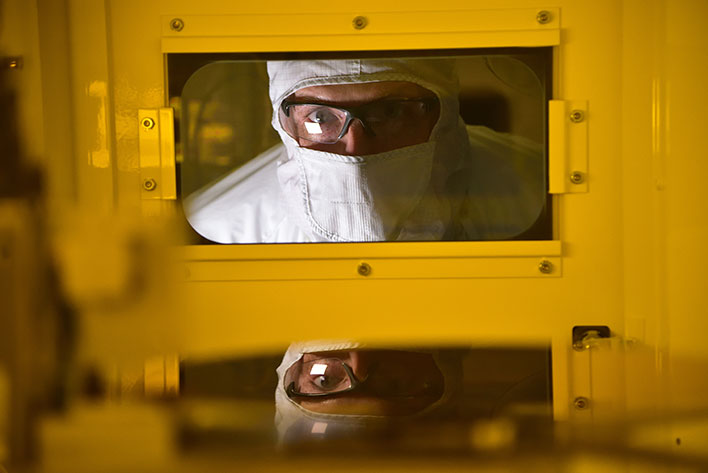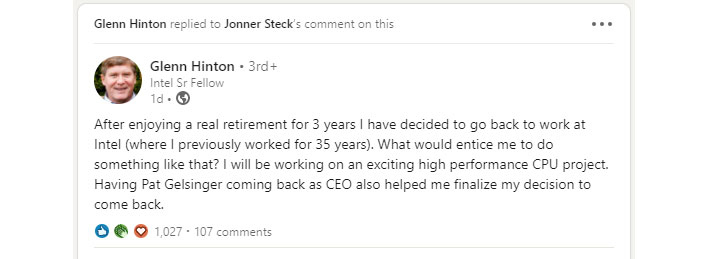Lead Nehalem Chip Architect Returns To Intel To Join New CEO Gelsinger

Intel's announcement that former CTO Pat Gelsinger is returning to replace Bob Swan as chief executive offer rocked the tech industry last week, but the biggest seismic waves might be yet to come. In fact, his hiring is already creating aftershocks. Following the announcement, the chief architect of Intel's Nehalem architecture and formerly a longtime Intel employee, Glenn Hinton, made it known he is coming out of retirement to work on an "exciting CPU project" at his old stomping ground.
This is a big deal, just as Nehalem was when it debuted over a decade ago. Nehalem was a major departure from Netburst, and was injected into the very first Core processors. This allowed Intel to resume kicking tail and taking names. Unfortunately for Intel, things are not coming as easy these days, with node issues and delays. But having Hinton return under the leadership of Gelsinger has the potential to have a major impact on where Intel goes from here.

Hinton's first run with Intel lasted from 1983 all the way until retiring in October 2017. In a post on LinkedIn, he acknowledged that Gelsinger's return played a role in his decision to come out of retirement. In a follow-up message, Hinton noted he had been mulling a return since last November, and the hiring of Gelsinger "helped finalize the decision."
A mysterious CPU project also gave him the nudge he needed. He added, "If it wasn't a fun project I wouldn't have come back. As you know, retirement is pretty darn nice." Indeed it is, or so we have been told from those who have left the workforce behind for good.
While he is perhaps best known for Nehalem, that is far from his only contribution to Intel's storied history. Hinton was a lead architecture on the first-ever super scaler microprocessor, the i960 CA, and helped spearhead the P6 processor design, which lead to the creation of the Pentium Pro, Pentium II, and Pentium III product lines.
"Invention does not come by itself for its own sake... it is the result of trying to solve specific real problems in the world, and key aspects often come as sparks of inspiration," Glenn told KSL.com in 2015, two years before he retired. "It takes effort and a belief that it can be solved, (despite all odds sometimes) and an ability to imagine the end before the end is even known."
In that same interview, he talked about innovative ideas coming at the most unexpected times, like during a three-mile run or "while awake in bed from 2 a.m. to 5 a.m. in the morning."
Hinton is a determined worker. He has eight CPU designs under his belt, and holds more than 100 U.S. patents, which he amassed during his first lengthy run with Intel. Details of the CPU project that has him so excited are not yet known, but given the moves Intel is making, there is certainly reason for us to be excited as well.

